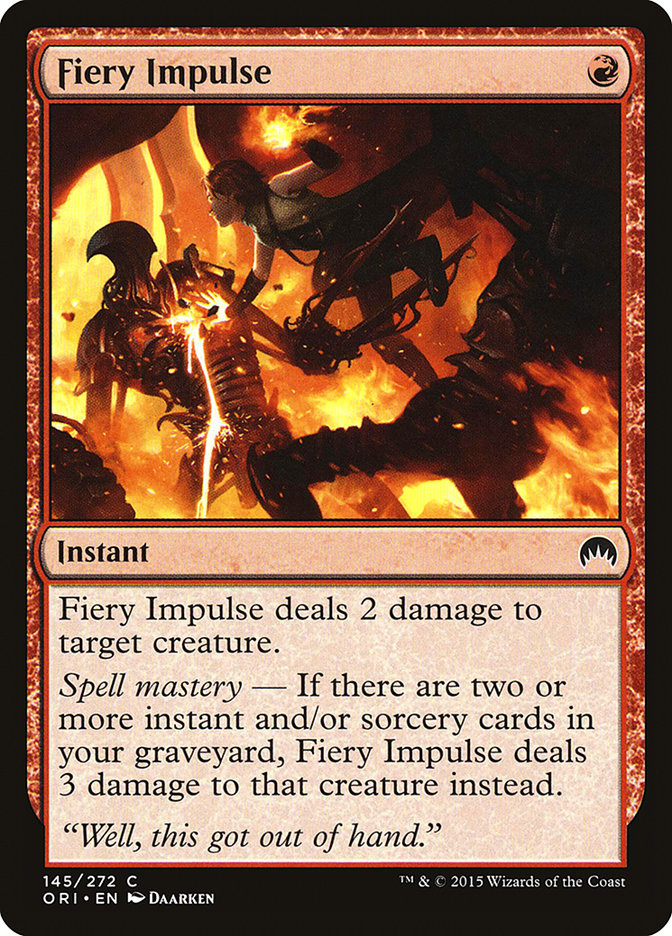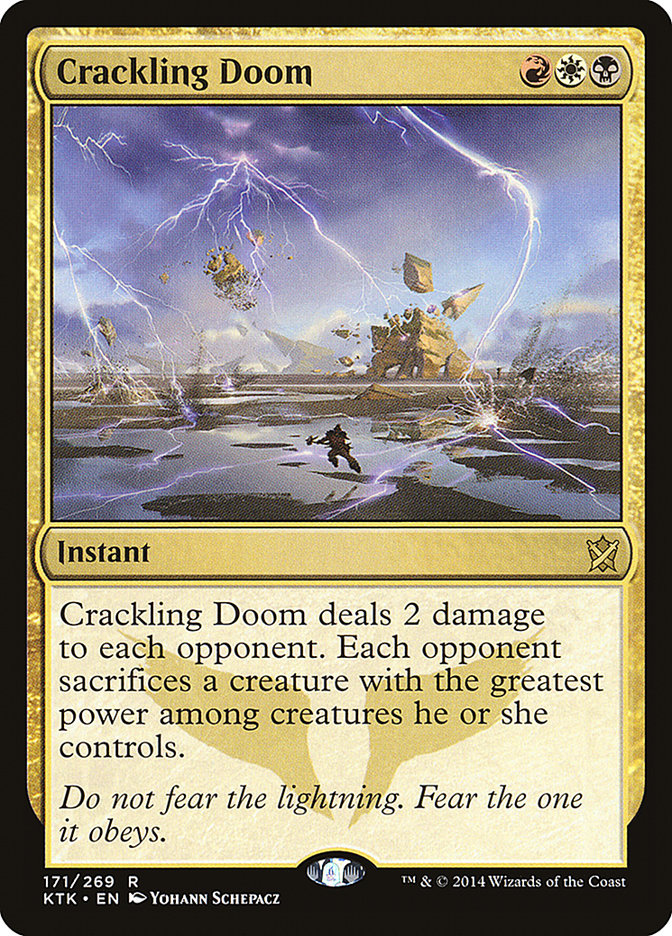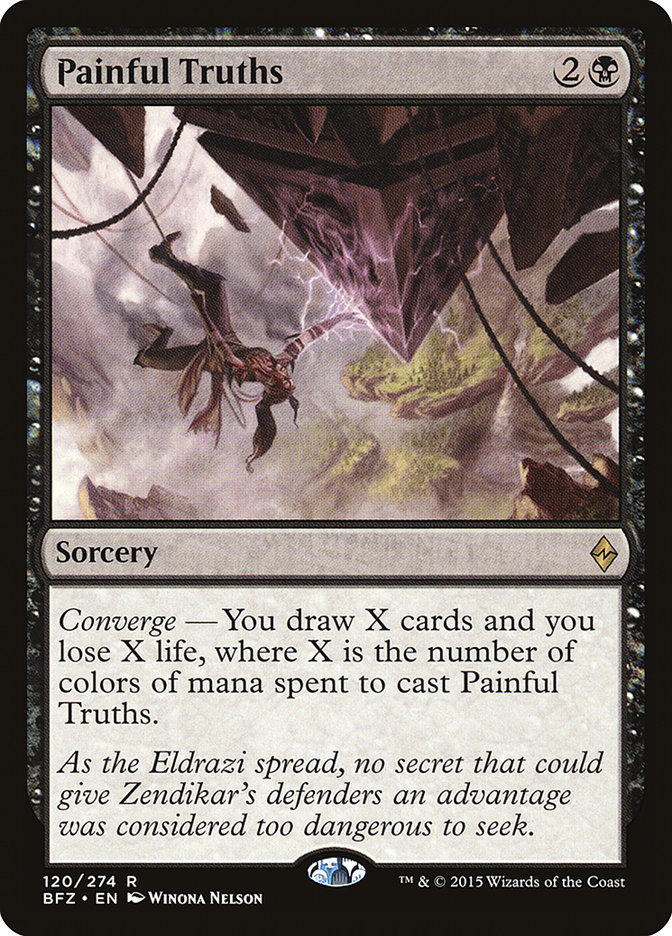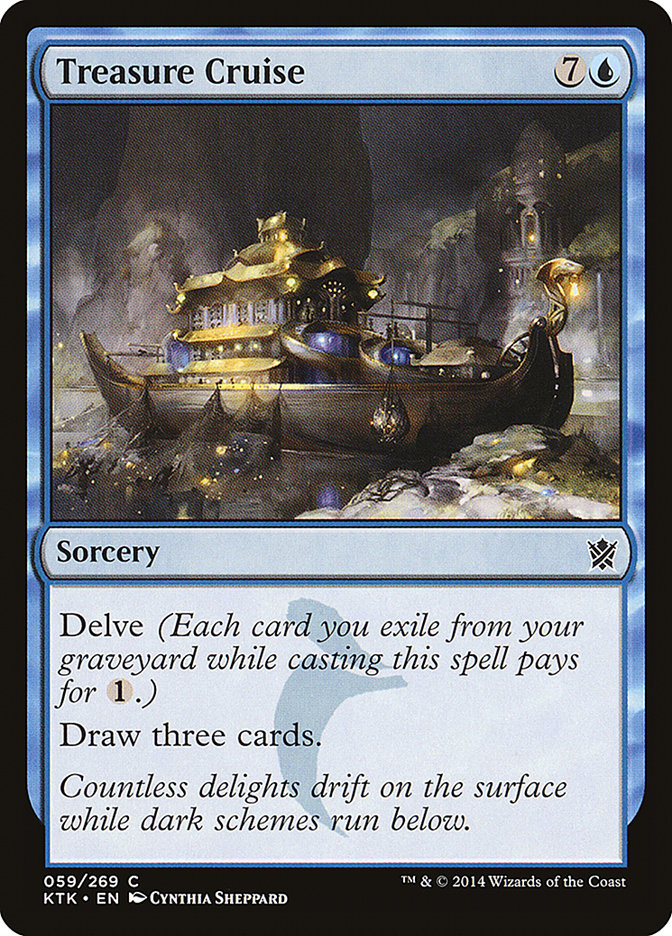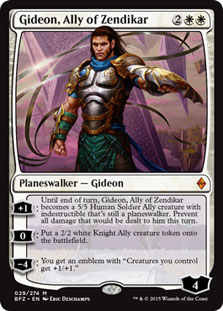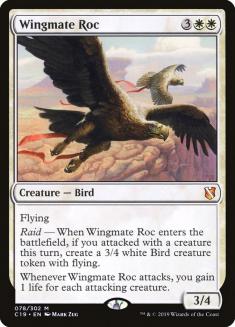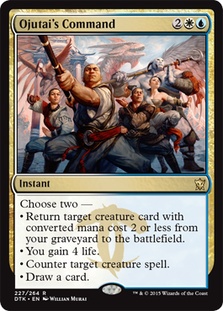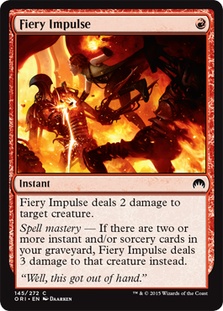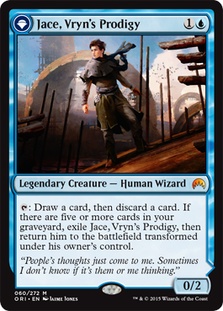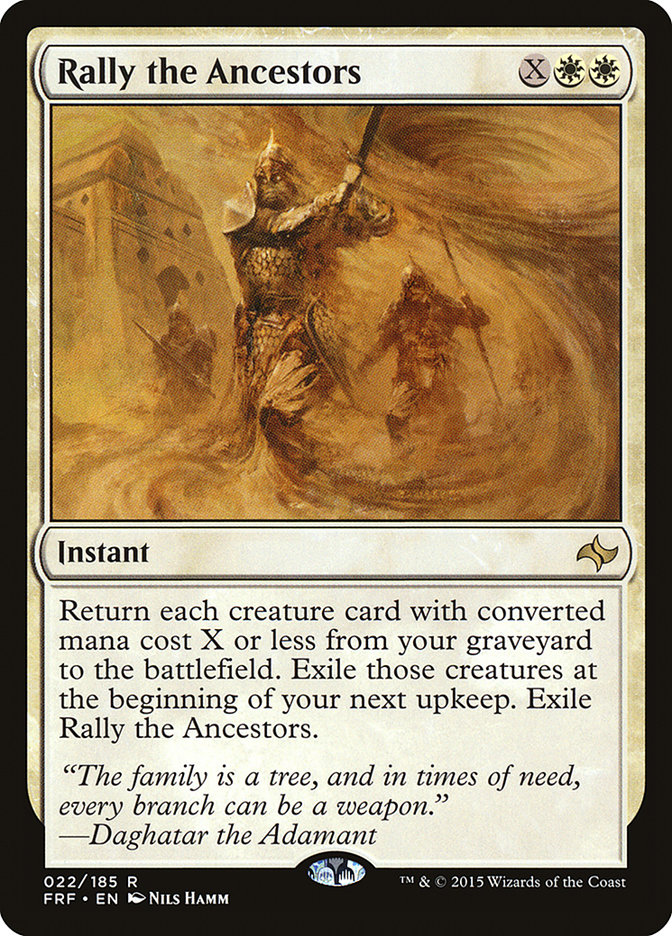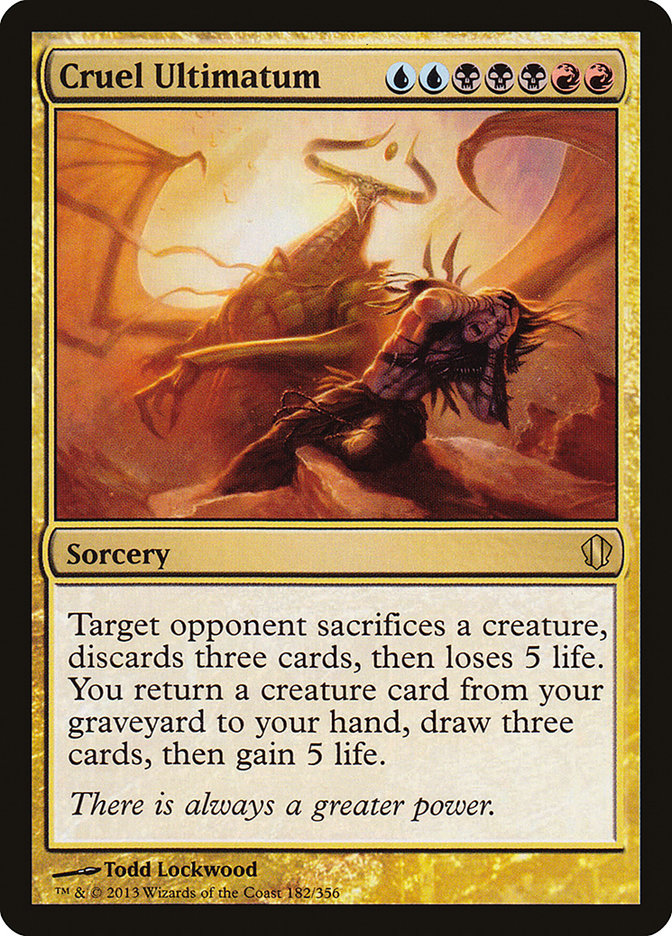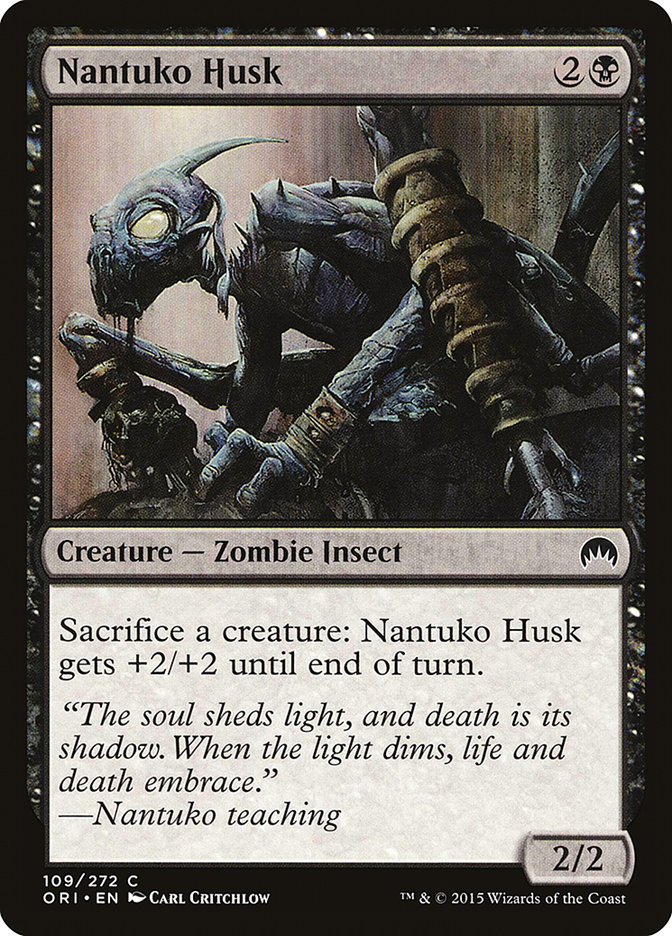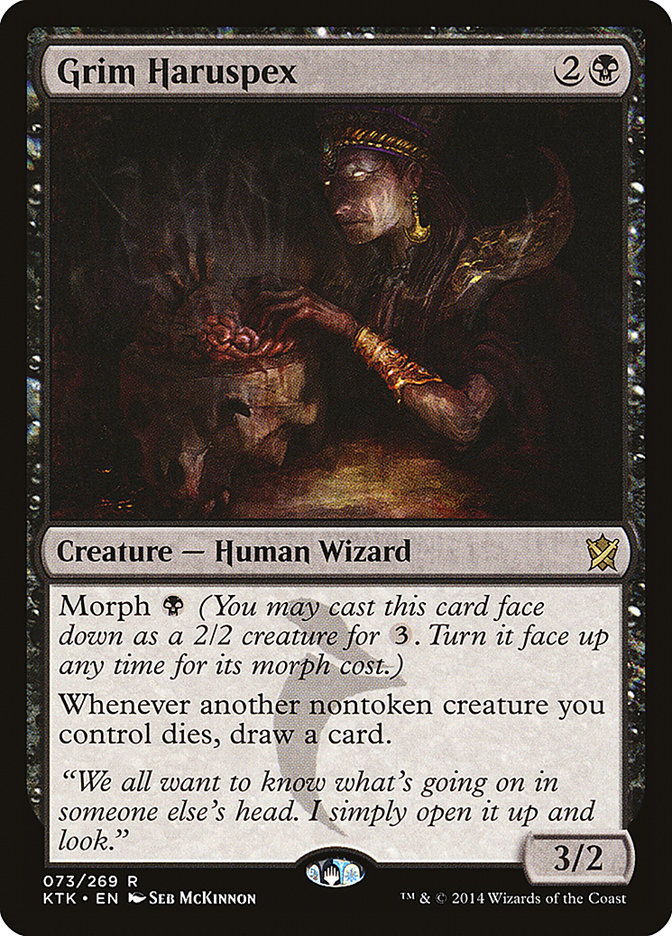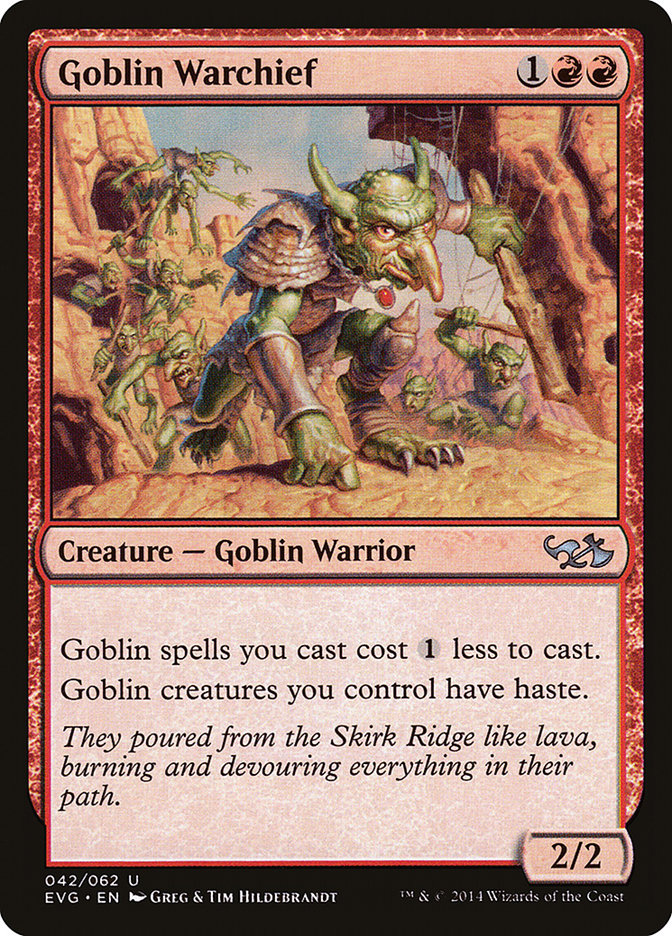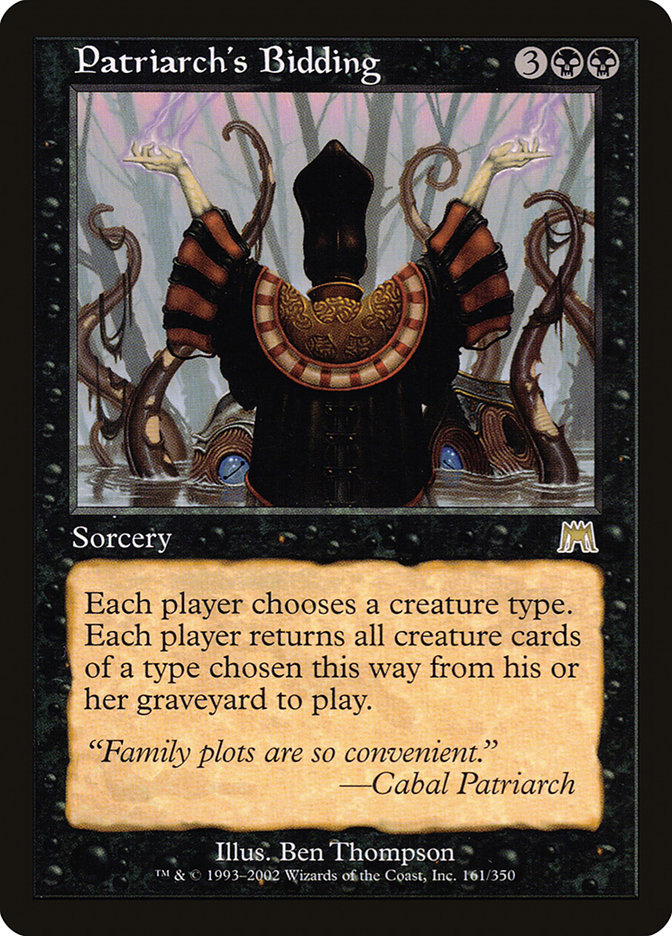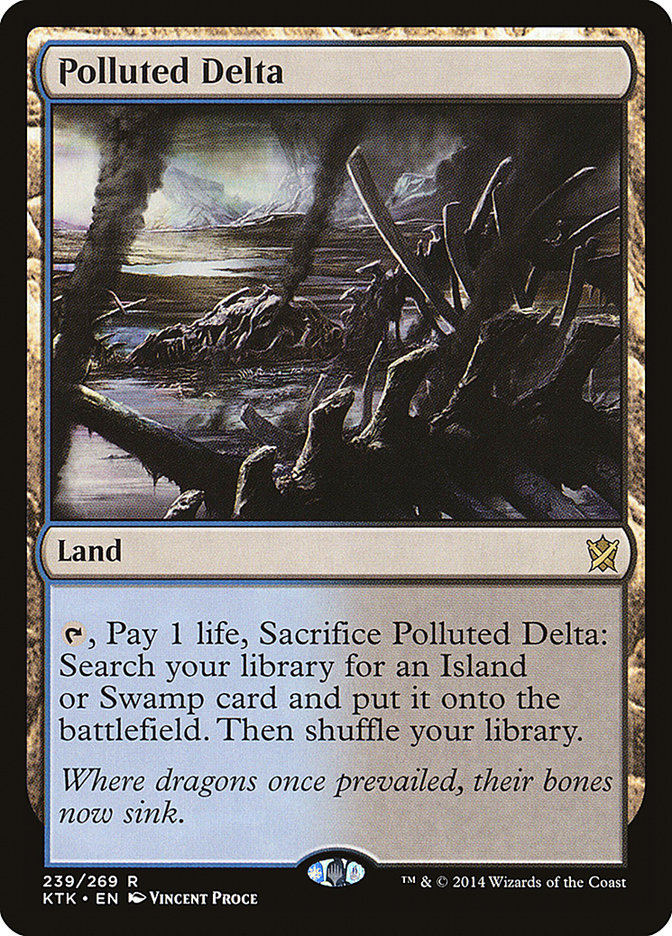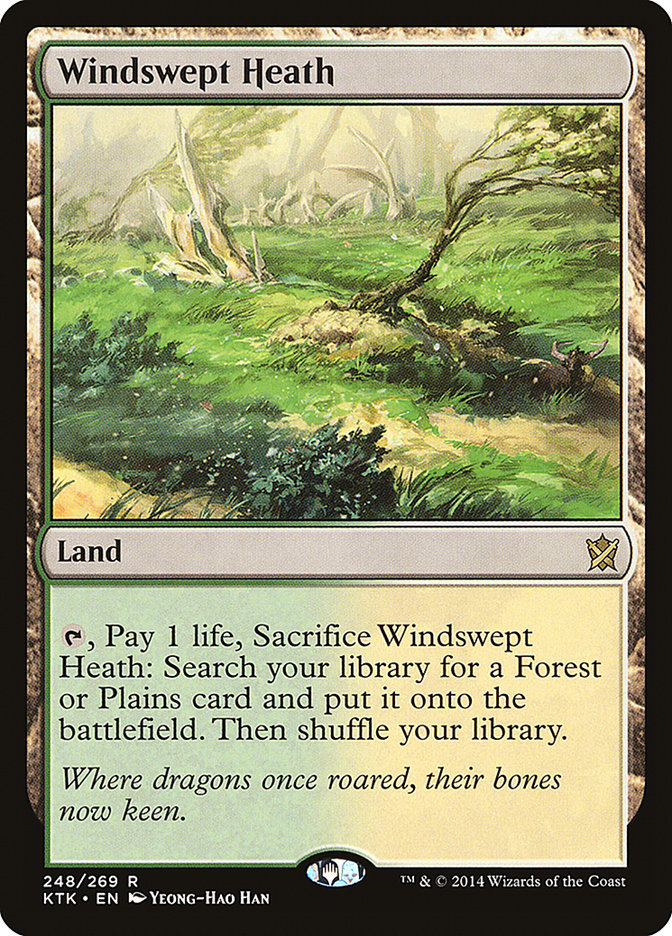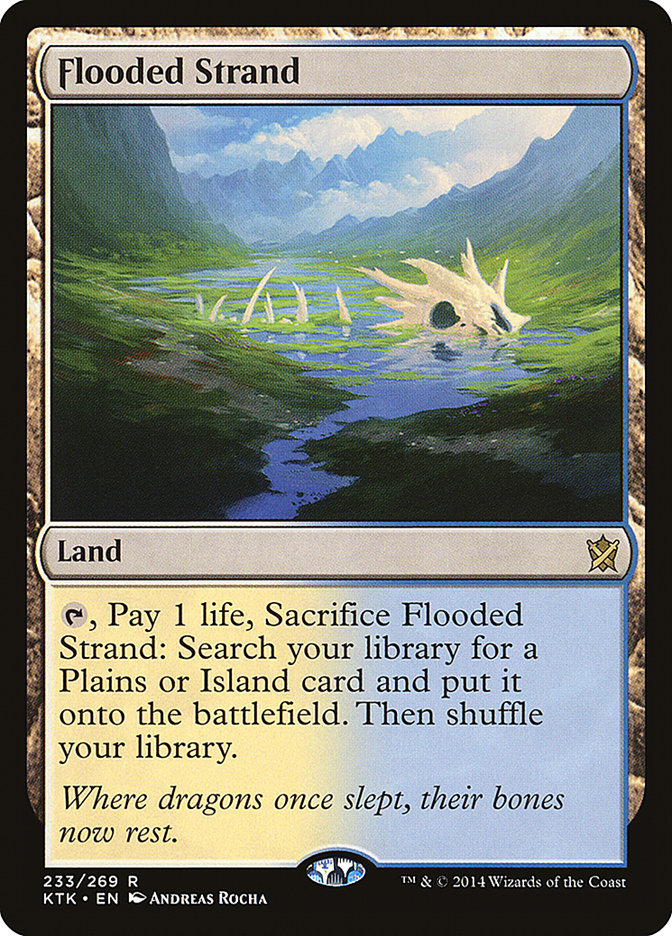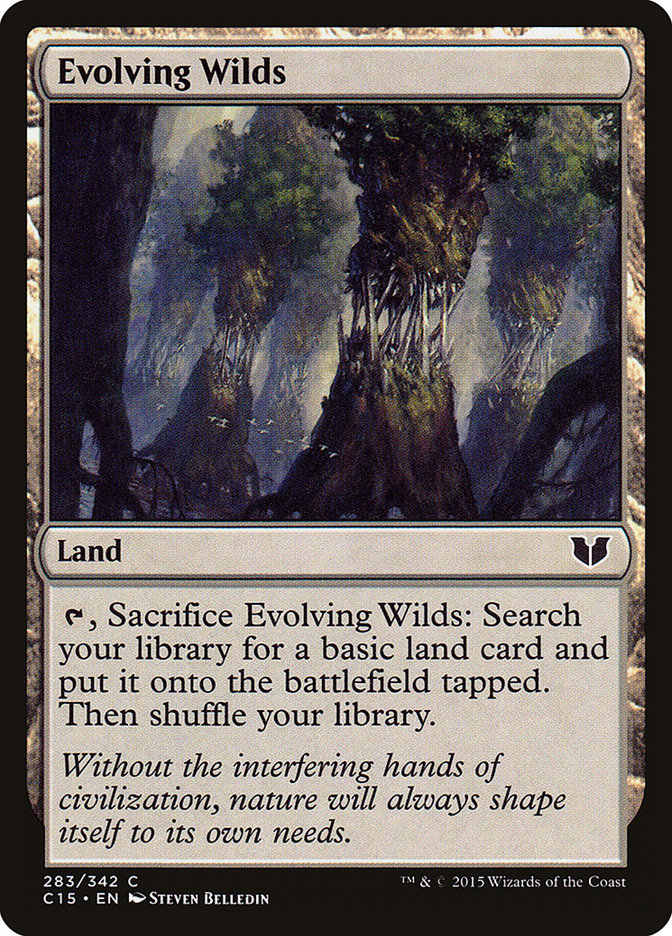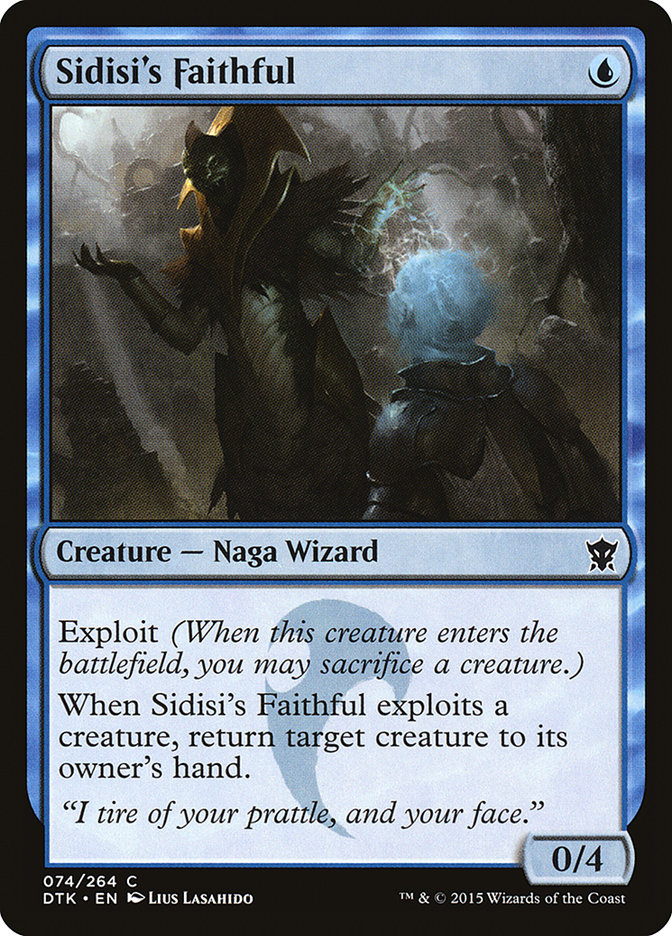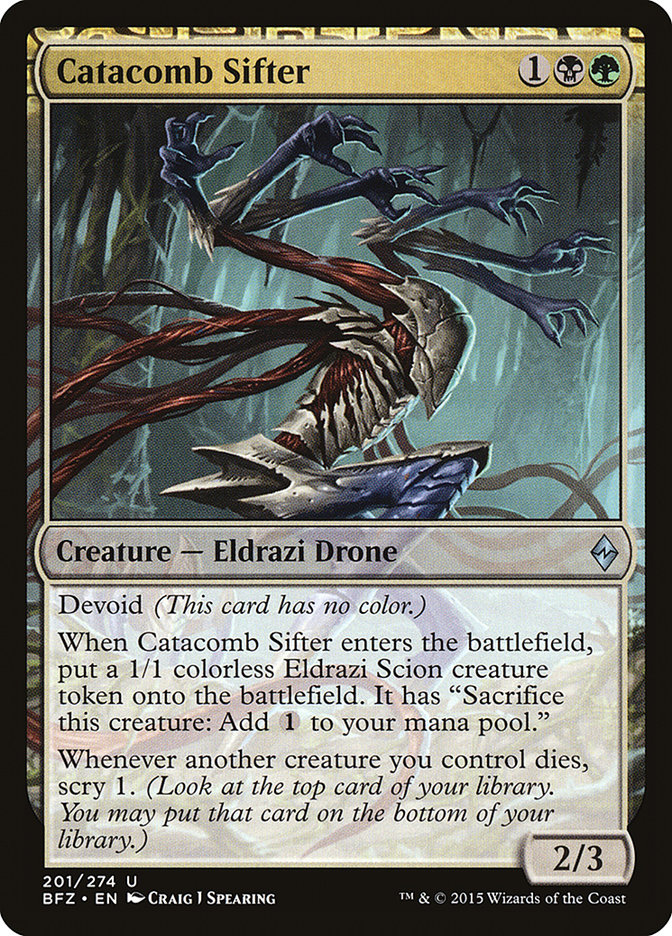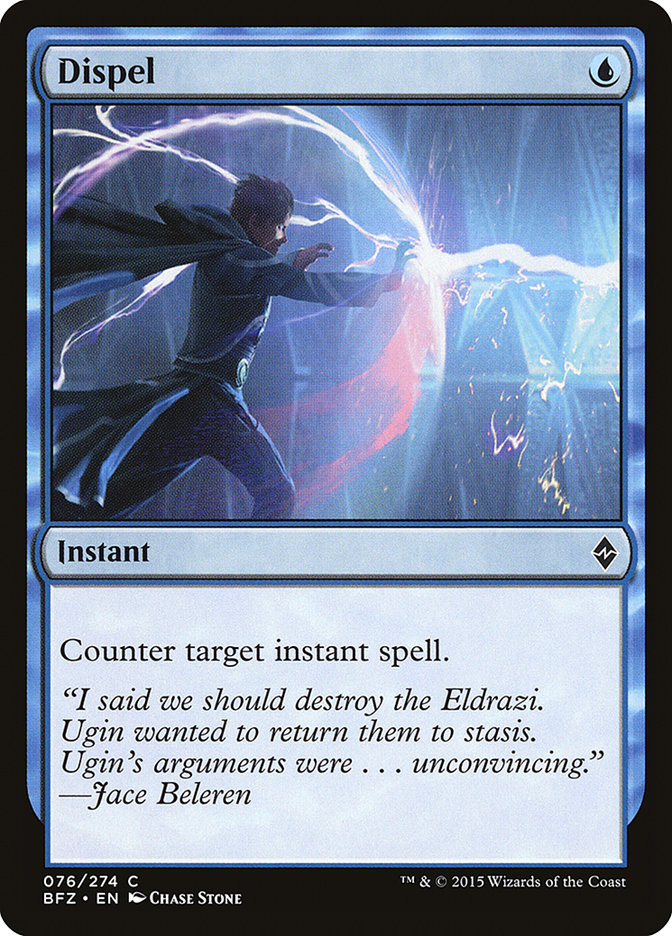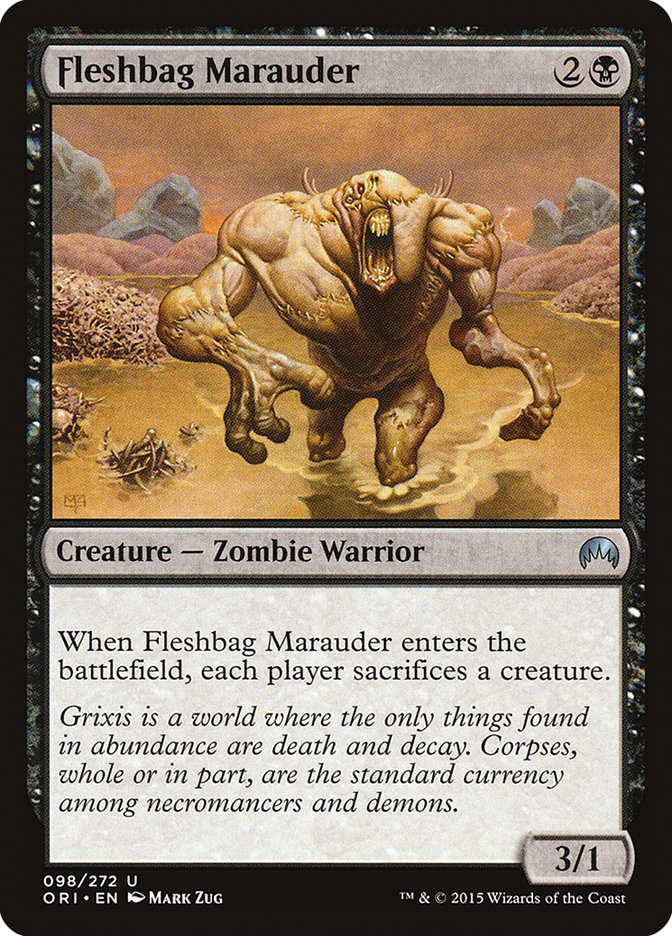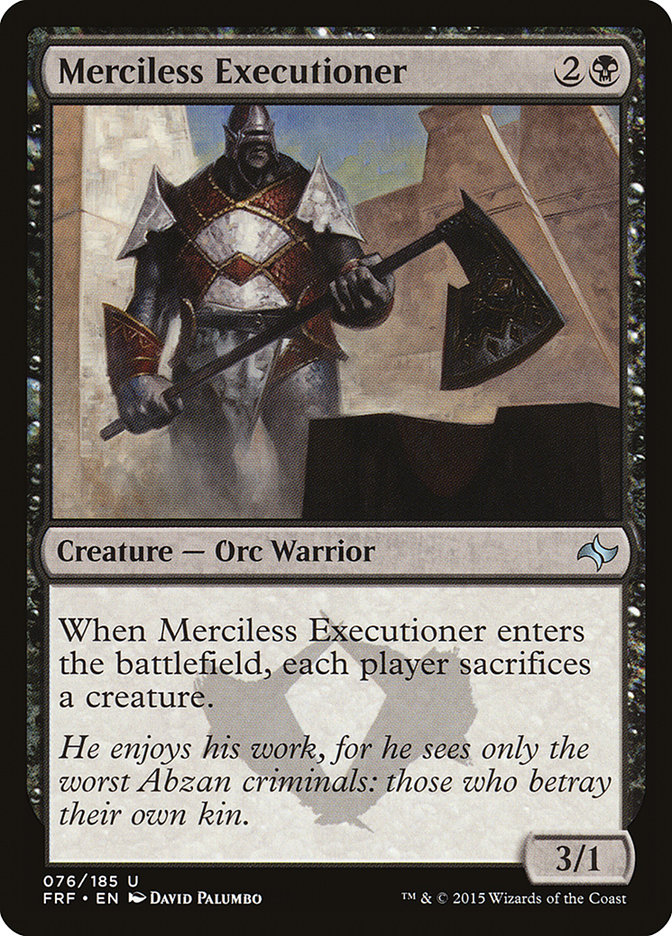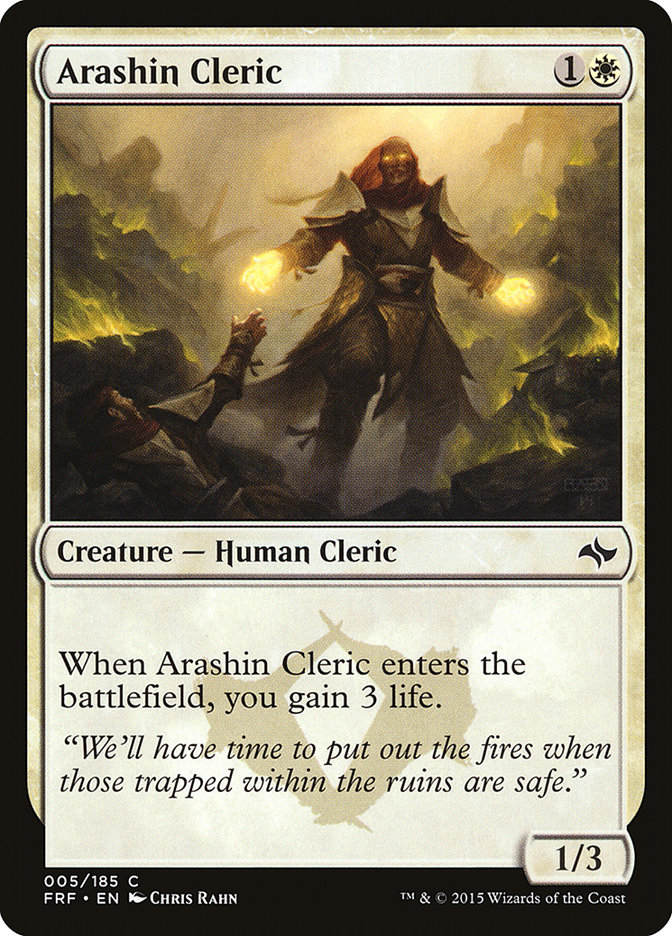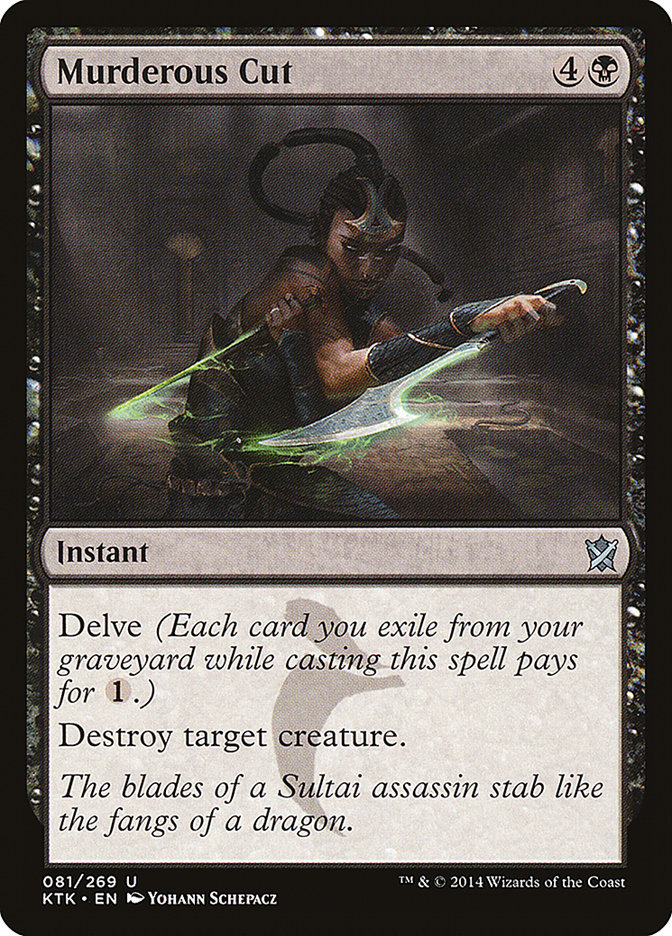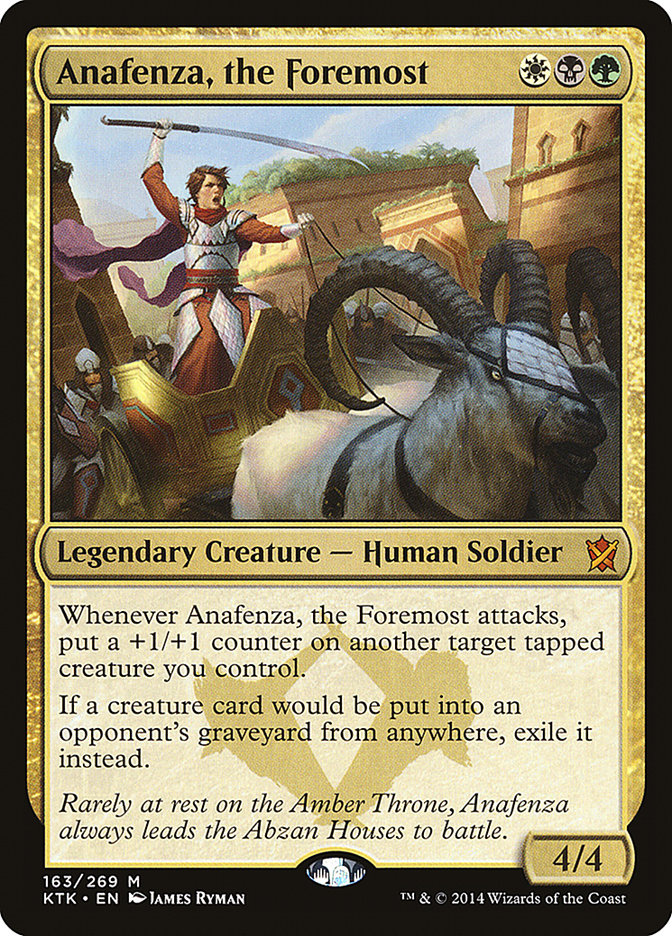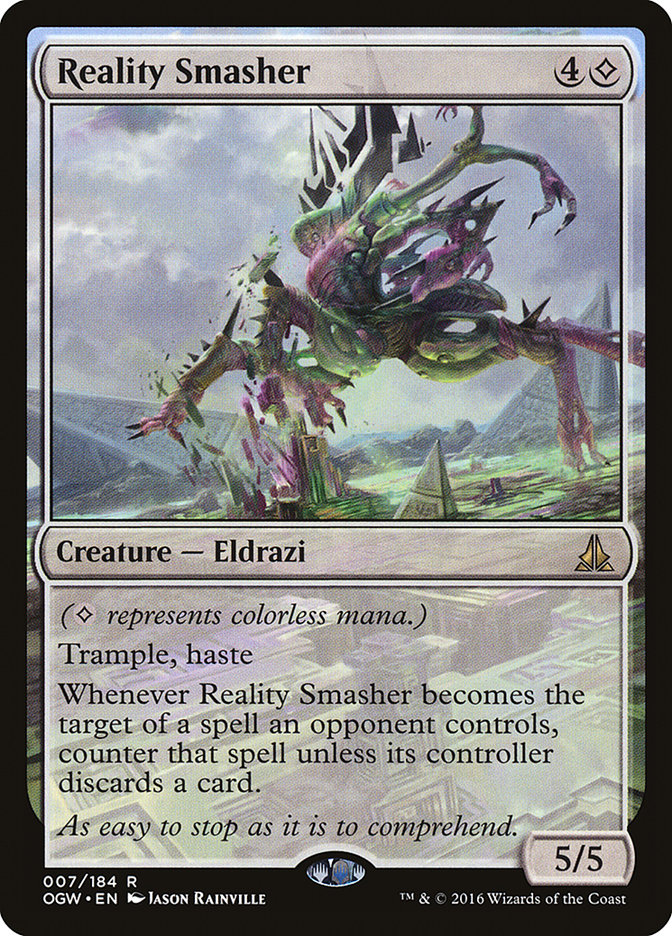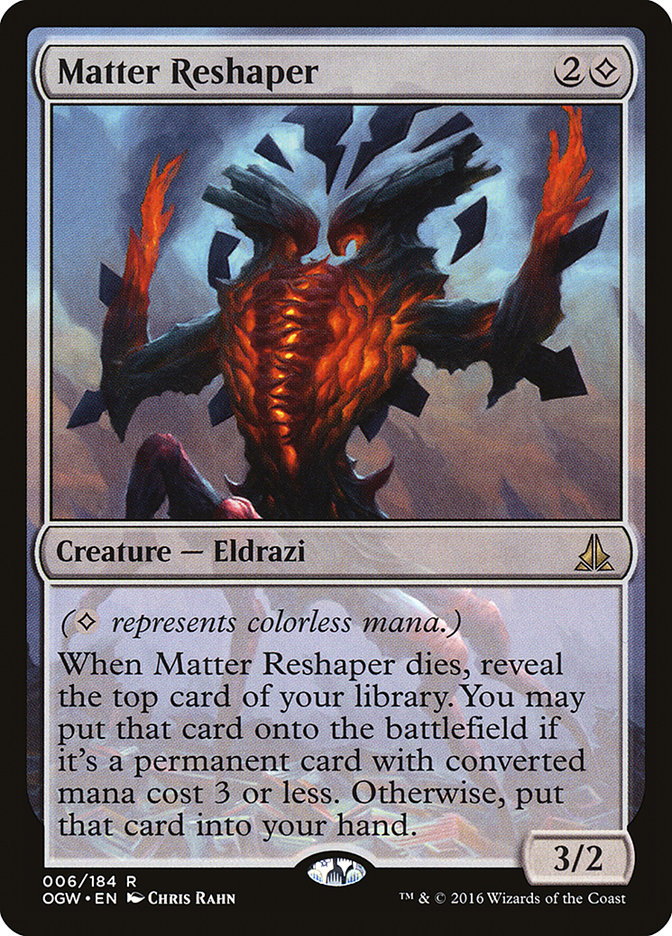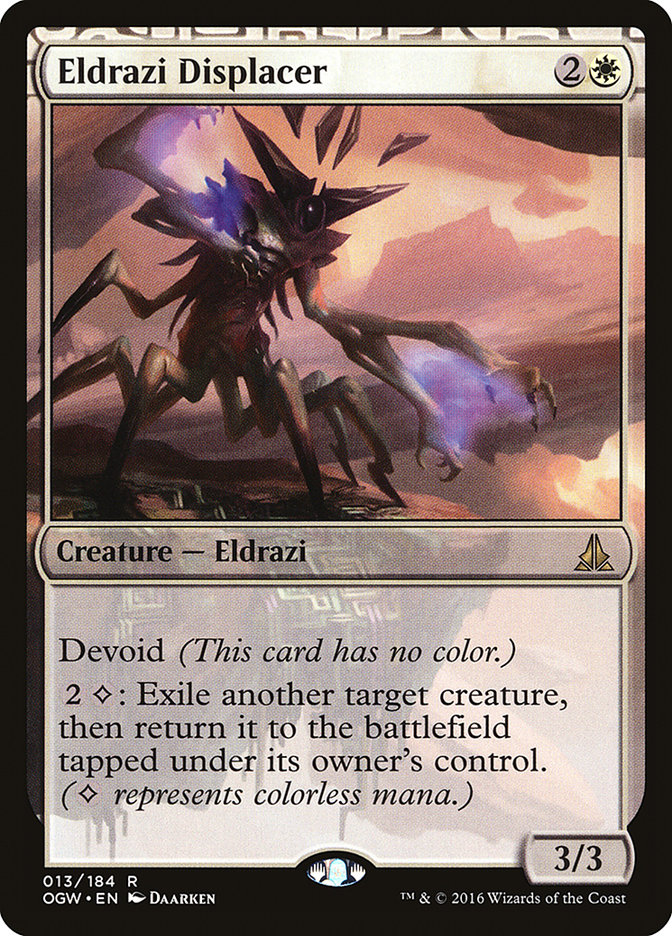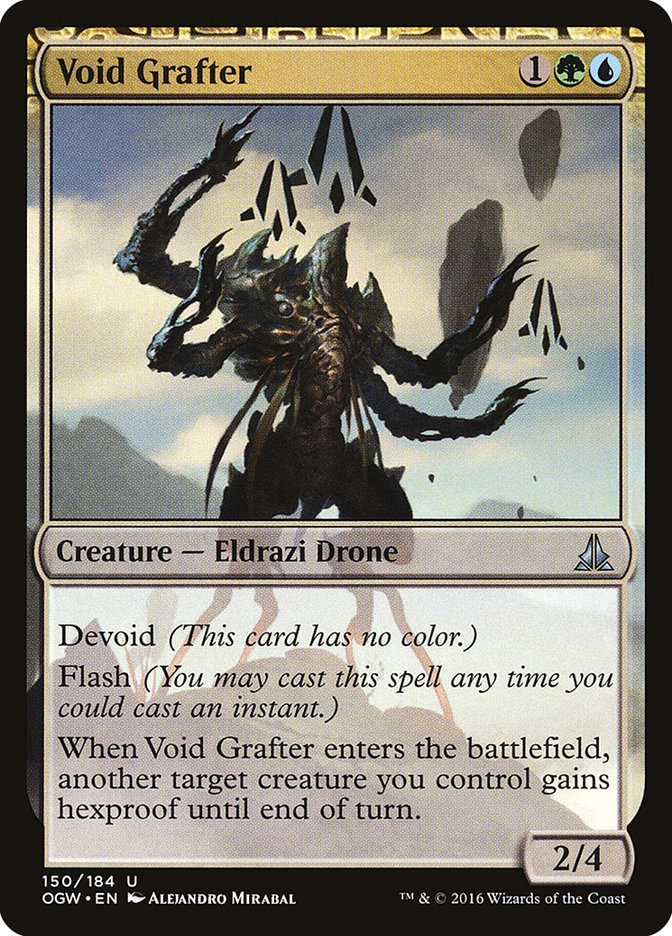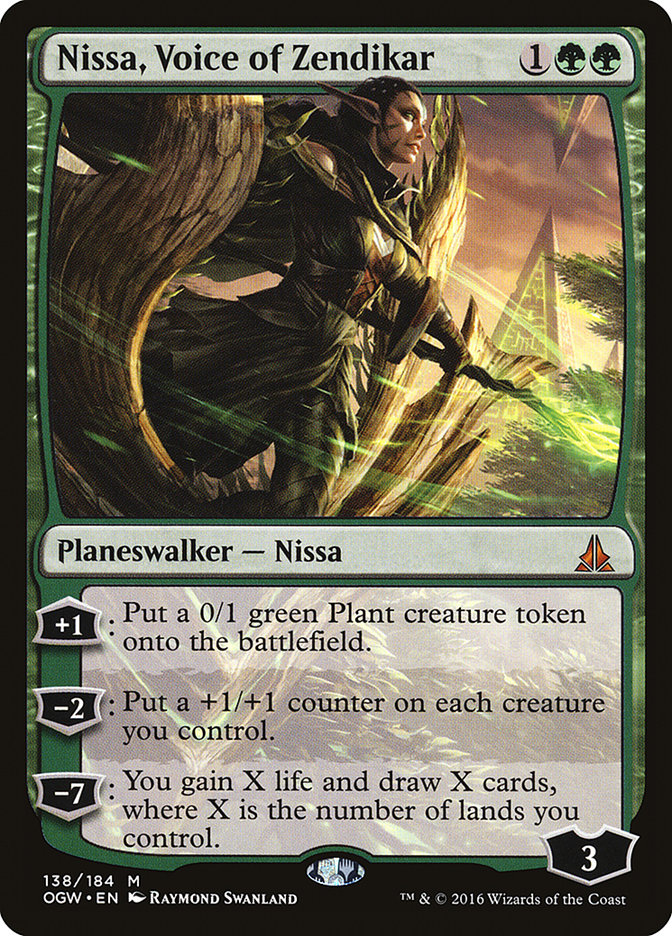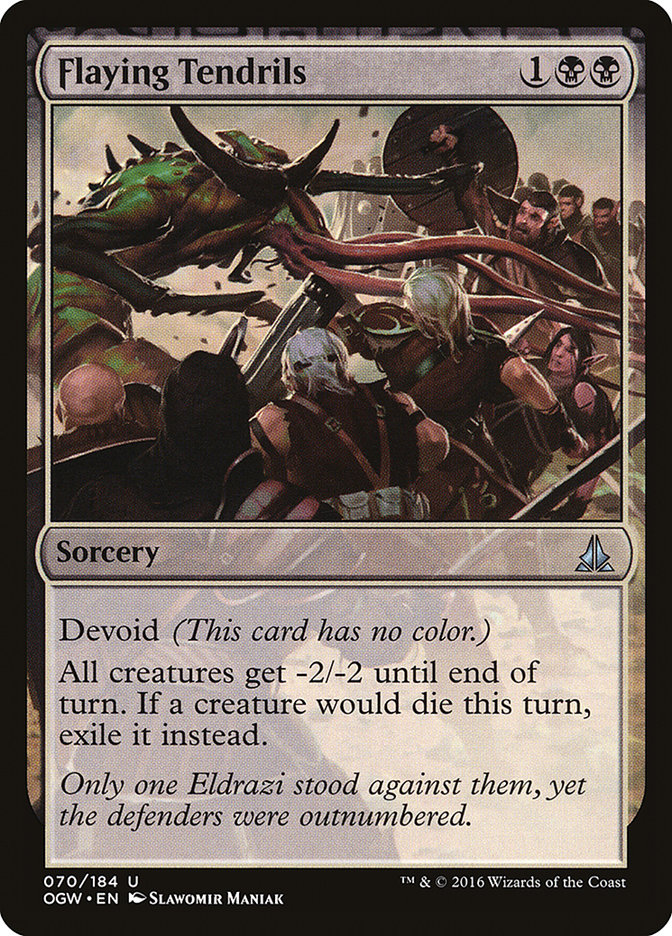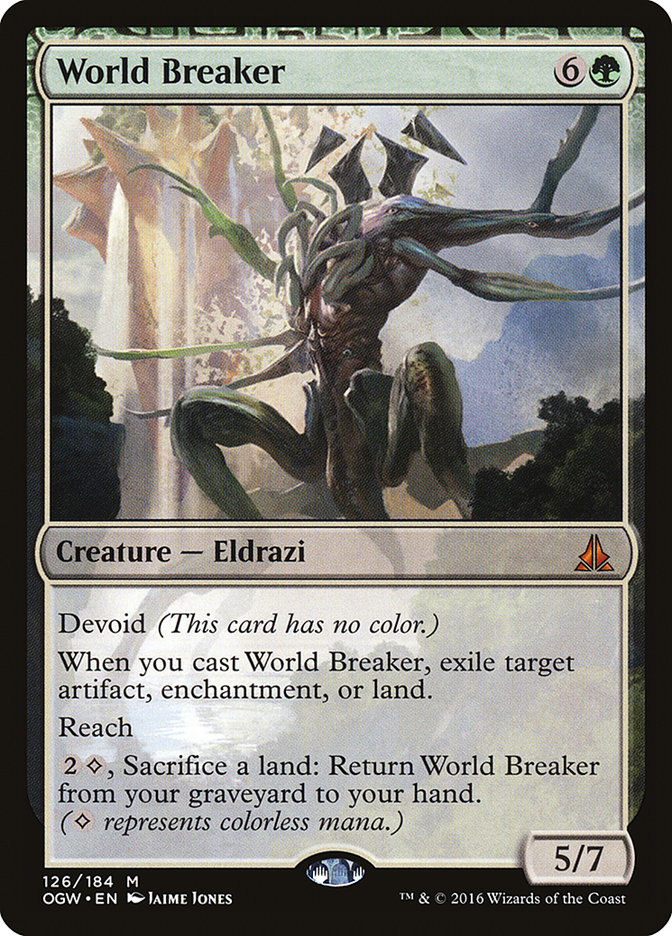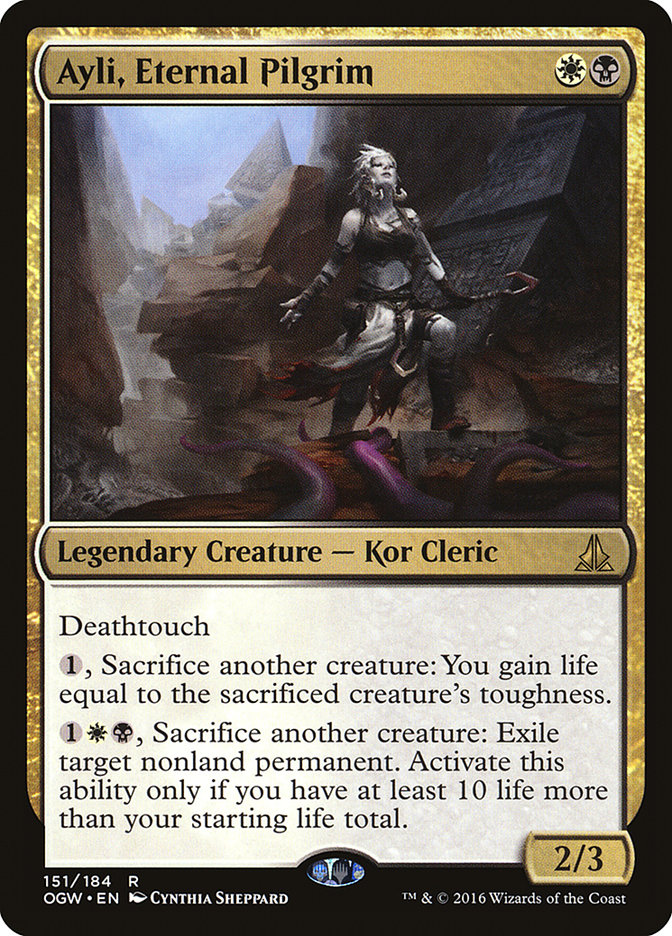Sure, the deck mostly dropped off the map right after that weekend, but so did the other “best deck of the event” in Bant Tokens. It’s OK, that’s how big undefined tournaments are supposed to work. You just need to beat the people on that day, not for the next six weeks as Jeskai and Abzan shape up their removal suites to beat what you showed up with.
But Matt Nass showed up with this:
Creatures (27)
- 4 Nantuko Husk
- 4 Elvish Visionary
- 4 Grim Haruspex
- 3 Sidisi's Faithful
- 4 Jace, Vryn's Prodigy
- 4 Catacomb Sifter
- 4 Zulaport Cutthroat
Lands (22)
Spells (11)
Sideboard

He literally had the best deck at the start of the format. Not “best deck of the weekend”, best in the format. It’s under ten cards from what the final optimized lists would look like, and a lot of that is just “play a different x/3 gain life creature to beat red”.
I feel so dumb. We kept testing these silly Aristocrats decks. Rally? Psh… can’t ever beat an Anafenza, the Foremost. Gotta play Bones Splinters for that one, that’s why we have all these Blisterpods. Yes, Murderous Cut is a legal Magic card, why do you mention that?
I probably should have figured it out, but I wasn’t really paying attention to Standard as I was skipping all the Grand Prix and The SCG Tour® for the rest of 2015 that featured it. When Martin Mueller, Magnus Lantto, and Simon Nielson all crushed Grand Prix Brussels while I was drafting Green at Grand Prix Atlanta, my only reaction was “Yeah, obviously the big control deck with real counterspells beats the do-nothing creature combo deck.”
Creatures (28)
- 4 Nantuko Husk
- 4 Elvish Visionary
- 4 Grim Haruspex
- 4 Sidisi's Faithful
- 4 Jace, Vryn's Prodigy
- 4 Catacomb Sifter
- 4 Zulaport Cutthroat
Lands (21)
Spells (11)
Sideboard

Then came time to test for Grand Prix Oakland. My 2013 Grand Prix Providence teammate/college buddy/”friend whom I have no idea how I have better results than” Matt McCullough had been grinding a fair amount of Magic Online Standard PTQs and had the following advice.
“Rally is completely busted.”
I of course thought that Mentor Jeskai Black like Todd Anderson played at the #SCGPC was also busted, but I decided to play Rally first. My post to my team within a couple hours of this decision was:
“Locking into Rally for GP Oakland. 5-0, 10-0’ed a League while still in the ‘no idea what I’m doing’ phase of learning the deck, can only imagine it gets better from here.”
I ended up losing playing for Top 8 of the event after two more weeks of practice, but Justin Cohen and I both went 12-3 with the deck. Yet again, there were three Rally decks in the Top 8, and Reid Duke ended up winning the whole thing with it.
Why is Rally So Good?
If you look at a lot of the other decks in Standard, you see the same general trends.
You have threats that are very powerful and either kill your opponent or snowball out of control if not answered in a very small window.
But there are tons of answers with varying levels of overlap. In theory this means that the first person to force a mismatch should win, but…
No one ever runs out of cards. You just keep gassing back up and throwing things at your opponent until someone bricks on card draw or answers for just long enough to lose.
The first way to get ahead in this kind of game is to become the first person to do two relevant things in one turn and then keep doing it. Basically, if card advantage almost doesn’t matter because there is too much of it and you often can’t use all of your cards, tempo becomes king. Not necessarily in terms of being ahead in early tempo, but incremental tempo. For those of you who have played other games with fixed actions per turn instead of mana, that’s what is going on here.
Other decks generate this with Planeswalkers that make tokens, two for one creatures or spells, or just cheap modular threats and answers that let the deck just cast two relevant things in a turn.
Turns out that Rally just gets to play the best two-for-one action spell in the format.
It’s so simple. 3G: make two things. In a deck like Rally where your entire creature base has incremental effects, that’s huge. Few other decks can even thing of starting to do two things on four mana, and even the ones that do are usually doing two things that are worse than your average Collected Company.
There is a deckbuilding cost associated with the card. Your maindeck has 28 creatures that cost three or less in it. At most, you can sideboard down to 24. Your deck is relatively static and it is hard to drastically reposition postboard against a fundamentally awkward matchup. Of course, Rally has found a few specific tricks that let it break this rule. Oh, and it just beats everything regardless.
There is some associated risk with Collected Company. You minimize it because you are well over the minimum creature count game 1, and unlike most Collected Company decks, your worst hit is a cantrip and not a virtual blank like Elvish Mystic or Birds of Paradise. The fetch-Battle mana base also pushes the odds in your favor, giving you a few bonus percentage points to hit two creatures. Still, you will brick some percentage of the time. 90% of the time Collected Company is insane, 9% of the time it’s a disappointment but not horrific, and 1% of the time you whiff and it’s miserable.
That’s life. Rally is generally a deck where some games you lose to “absurd low-probability things.” Sometimes it’s Collected Company whiffing, sometimes your mana gets you, sometimes they play Warden of the First Tree into Anafenza, the Foremost all three games (yes, you can force that draw to play three games), sometimes you see 40 cards and and zero of them are Rally the Ancestors or Zulaport Cutthroat or whatever card you needed (aka a Dredge failure, where the Dredge deck resolves a Breakthrough, mills 36 cards, and zero are Narcomoeba). If this is a super frustrating experience for you and you would rather feel like you had something to do every game, play Fiery Impulse and not Sidisi’s Faithful. You will instead lose games where you did do things because your deck is not as powerful, but that has always been the combo versus control/midrange debate.
Aside: Note the four-color mana failures are a “feature” of this format that every deck experiences, even the two-color ones like Atarka Red. This is a consequence of fetch-Battle mana plus the high-powered Khans of Tarkir cards: every deck has insane curve out draws that are very bad to stumble against, but the mana in every deck has some percentage fail rate where you draw all your colors in tapped Battle lands or are just short one and have to hope. It doesn’t matter if it’s Cinder Glade tapped on turn 2 messing up your two-drop or Shambling Vent messing up your turn 3 Anafenza, the Foremost or drawing three Flooded Strand and not being able to get red mana, that’s just this Standard format.
Back to the idea of a midrange tempo-based format, the other way to get out of this is trump everyone on the midrange side by going a step bigger. Except all the big spells in the format are just mediocre. Everything below eight mana isn’t actually a trump to the three-, four-, and five-mana plays, and the ramp isn’t good enough to get to eight in time in the face of Duress and Disdainful Stroke. This is especially notable in the case of Ulamog, the Ceaseless Hunger, which is basically “ten mana, win the game” but usually is more “ten mana, you die with this in your hand.”
All of the big spells except one, that is.
Unlike Ugin, Rally the Ancestors doesn’t ask that you spend a bunch of cards to get to eight mana to cast it, aka the Modern Scapeshift issue where your “one card combo” is really “one card and seven others to get to the point of casting it.” Rally just asks that you play specific creatures in your deck and then cast them.
It doesn’t even ask that you set up a fully lethal graveyard. I’ve played a backbreaking Rally the Ancestors for 1WW, where I returned two Sidisi’s Faithfuls, bounced multiple creatures, drew multiple cards, and attacked through the resulting empty board for seven. Often the combination of a couple of cantrips or scrys, some life drain, a bounce or two, and flipping a Jace is enough to effectively end the game. When you “short” Rally someone, it’s still close to Cruel Ultimatum.
But really, the big thing about Rally the Ancestors is that it doesn’t even ask you to be remotely in the game. It’s a true combo finisher. As long as you have diligently extended the game to the point you cast it with a full graveyard, the game ends. Even the first short Rally often leads to a second short Rally, and the second… well, usually the third isn’t needed.
Tying it all together is that fact that Rally is perfectly capable of winning the game without either of itss insane spells. The big effects make it easy if they resolve, but just playing things up the curve is enough if your opponent’s draw doesn’t put together enough resistance. Get in a few chip shots with your mediocre beatdown creatures, and suddenly your opponent is forced to chump block Nantuko Husk every combat and is getting slowly drained out while you draw cards. Or more commonly, you just keep doing things that matter and the game reaches a point where eventually Jace, Vryn’s Prodigy, Grim Haruspex, Catacomb Sifter, and Elvish Visionary will find one of the cards that does win you the game.
Also worth noting: the combo deck that forces opponents to handle the combo and beatdown plans is nothing new. Elves did it, the other Elves deck did it, that other other Elves deck did it, etc. The difference is that Rally the Ancestors subverts how you are supposed to combat it. For over a decade the answer to creature-combo has been to tear apart their board as that stops both halves. With Rally all that does is prevent them from “going off” without Rally and forces you to kill them before they do. It’s been a long time since Patriarch’s Bidding returned Goblin Warchief and Goblin Sharpshooter, but Rally the Ancestors is the same thing over a decade later.
This is what I played at Grand Prix Oakland and is within one or two cards from the starting “stock” list I would be looking to modify with Oath of the Gatewatch cards. For those who want to skip ahead and come back, the post-Oath list I would start on is at the end of this article.
Creatures (28)
- 4 Nantuko Husk
- 4 Elvish Visionary
- 4 Grim Haruspex
- 4 Sidisi's Faithful
- 4 Jace, Vryn's Prodigy
- 4 Catacomb Sifter
- 4 Zulaport Cutthroat
Lands (21)
Spells (11)

Overall, Rally isn’t the most technically difficult deck to play. There’s some math and you have to remember your triggers (tip: set a reminder die that you increment/decrement as the number of triggers you have changes), but if you just play your creatures efficiently and do things that are obviously profitable you will win. Sometimes you will play a Collected Company and struggle to figure out what to choose to do the most things, but most of the time when it comes down to that it’s the difference between winning a lot and winning more than a lot. Yes, I am about to dump an actual ton of technical notes on you, but it’s mostly small sequencing things and not a lot of high-level difficult things like playing around certain effects at certain times. Doing your thing game 1 looks the same against basically everything in the format.
This is probably the trickiest part of the deck. Or, really, the format. Every single game starts with two minutes of shuffling and two minutes of “how do I sequence my lands to make it all work out?”
The ideal sequencing for this deck is usually Swamp, Island into Jace, Canopy Vista into whatever, and then any second white source into Collected Company. When in doubt, most hands follow a similar U, B, GW, W/x land curve, with the main goal being untapped mana to keep playing things on curve.
I’m going to repeat that again, as it’s probably the most important part of the deck. The worst hands are the ones you are playing off curve due to your mana entering the battlefield tapped. Your goal is to enter the midgame not completely behind on board.
Most of this has to do with Polluted Delta and needing double white. Prairie Stream is one of the worst lands in the deck because of how few blue and white spells you actually play, but it’s really important in letting Windswept Heath and Polluted Delta do more. While Heath for Stream is relatively rare, ending up in a spot where you need the next land you draw to find your second white is very common. If you fetch Prairie Stream early, you can then draw Polluted Delta and be unable to fetch an untapped white source. This can also happen to a lesser extent with Evolving Wilds and basic Plains. Being able to cast your pre-Rally spells on time always comes first, but when given two options where one lets you leave Prairie Stream in your deck and curve out, take that one.
Most of the times you deviate from the optimal curve out involve hands where all your fetches are all Polluted Delta or all Windswept Heath and not a mix, often with Evolving Wilds as your other mana. Delta doesn’t fetch Green mana. Heath doesn’t fetch Black mana. You then end up in spots where you have to play Evolving Wilds first to not have a tapped land on turn 2 or 3 and then are forced to use your two matching fetches to find slightly suboptimal other lands.
Remember, you have the option to fetch a tapped Battle land on turn 1 or just play one from your hand. This was a spot where I was throwing away games early on, specifically with two Windswept Heath and a Delta. In this case you should find Sunken Hollow with Delta on turn 1, Forest on turn 2 with Heath, and then Plains on turn 3 with the other Heath.
Always remember that if you draw a different land in the early game, you can easily change your fetch sequencing. Don’t get locked into a sequencing path and miss a slightly better one that opens up later.
Beyond the basic requirement of WW, G, U, B to cast all your spells, the most important next source is the second black. There are a lot of black spells in the deck, and keeping in theme with the “do two things in a turn” goal, that is often a midgame choke point if you aren’t comboing out.
Behind the lands, this is the most complicated part of the deck, mostly because the card is so modular. It costs one and gives you tons of options. There are four main situations that come up with Sidisi’s Faithful, plus a few corner cases.
- 1. Your opponent has Anafenza, the Foremost or Kalitas, Traitor of Ghet in their deck. In general you want to save the Sidisi’s Faithful to set up one big turn where you clear their legendary creature and go off, but there is an exception when you have a Rally to spare, either because you have two or because you are just going to beat them down regardless. In this case, getting a Sidisi’s Faithful into your graveyard before they land their exile effect so that you can Rally the Ancestors as an Unsummon at instant speed is a good idea.
- 2. You are playing versus an aggressive deck, either Atarka Red or anything with Seeker of the Way. In these cases an 0/4 is fine to leave around and you can just cast Sidisi’s Faithful early to block. Against Atarka Red some of your best curves start on turn 1.
- 3. You have an extra mana and your opponent has a creature that significantly messes up their situation if you bounce it. Typically in these cases you are playing Sidisi’s Faithful and another spell that turn. Common situations are stopping a Jace, Vryn’s Prodigy from flipping, putting your opponent in a spot where they have to choose between removal for the other thing you played or reestablishing a board, removing the thing they were using as a good blocker, or just generally when they have something that they want to recast that costs three or more. In this case you are just using Sidisi’s Faithful as a true Unsummon for tempo.
- 4. The board is stalled and you aren’t getting a ton out of the bounce. In this case you are just trying to get value out of the sacrifice. If you have a Grim Haruspex or Catacomb Sifter without a known top card of deck, it’s usually good to fire this off sooner to try and dig to action, but if you have neither you usually want to save it until you can.
Now for the corner cases.
- 1. Remember that you can Sidisi’s Faithful your own creatures to loop something like an Elvish Visionary. You can also sacrifice another creature to Sidisi’s Faithful to have it bounce itself, which allows for some corner case scenarios with Grim Haruspex where you get to use one Faithful to sacrifice multiple creatures and draw multiple cards. Or in an even more narrow case, you can use Sidisi’s Faithful looping itself this way as a makeshift Nantuko Husk when Zulaport Cutthroating someone out. The big reason this is harder than expected is that it takes a lot of blue mana, and I have never actually had the Faithful self-bounce loop come up.
- 2. If they kill your Sidisi’s Faithful before you sacrifice to it (in response to the original Exploit trigger), the bounce on Exploit trigger will not happen. This can happen versus Abzan when trying to clear an Anafenza, and most commonly comes up on Magic Online when you Rally multiple Sidisi’s Faithfuls back and accidentally sacrifice the one that resolves second to the first one.
- 3. When Rallying to Zulaport Cutthroats and Nantuko Husk, you can get bonus drains by responding to the Sidisi’s Faithful sacrifice trigger by sacrificing everything but the Cutthroats in response to Nantuko Husk (including the Husk itself), then sacrificing a Cutthroat when the Exploit trigger resolves. In the simple case of just one Cutthroat, one Husk, and one Faithful, this lets you get damage equal to the number of creatures you control instead of one less without the Faithful, as your Husk has to sacrifice the Zulaport Cutthroat before it dies. This is a corner case because very rarely do you need the exact count to drain them out.
As for sideboarding, if you don’t want an 0/4 and they don’t have things you want to tempo them out on (Mantis Rider and Rattleclaw Mystic are included here), you are boarding down on Sidisi’s Faithfuls. Against Mentor Jeskai decks I still leave in one or two, as even if they aren’t great to draw a lot of, you can still sometimes get solid tempo value.
You sideboard this card out a lot. It’s the closest thing to filler you have. Just be aware that cycling to your action is still fine and that you need at least 24 creatures in your deck in all post-board configurations. Also, when you cut all of these and Sidisi’s Faithful, your curve can get really clunky. I often leave in one or two when given the option.
The Jace-Rally interaction is one of the more important ones for short Rallys. When you return a Jace, Vryn’s Prodigy via Rally the Ancestors, you can respond on your next upkeep’s Rally trigger with a Jace activation. If Jace flips from the activation, it leaves play and returns as a new Jace, Telepath Unbound that is not linked to the original Rally trigger and remains in play.
If you don’t have Collected Company or the sideboard spells to Flashback, the default is to keep Jace as a creature as long as possible and get the most Looting activations out of it before it flips. The exception is if you just want to get it into planeswalker mode to avoid a Fiery Impulse, if, for example, they fired off a Painful Truths last turn and didn’t have an untapped red source after.
Jace, Vryn’s Prodigy is a legendary creature. If you Rally back multiples, all but one die immediately to this. The triggers from this go on the same giant first stack as all your Catacomb Sifter Scion triggers, so get familiar with this so you don’t miss anything. This is also another way to make death triggers without a Nantuko Husk.
There are cases where you want to not activate and flip Jace on your turn so you can get a free block by flipping it in combat on your opponent’s turn. They aren’t common, as usually the -2/-0 does much of the same thing as the free block, and because trample still runs over a non-blocker in the case of Siege Rhino or Temur Battle Rage.
Many people like boarding this card out against Atarka Red, but I’m pretty sure that’s wrong. Flashing back a Collected Company with Jace is one of the big plays you need to solidly get ahead in a game to where you can start attacking. You shave down on them for sure, but completely cutting them is not how you win.
Against Anafenza, the Foremost, any creatures you discard to Jace will be exiled. This is not true of Kalitas, Traitor of Ghet, which specifically calls out dying instead of being put in the graveyard from anywhere.
This is the creature I discard the most to Jace, Vryn’s Prodigy. Double black can be a choke point and this card is relatively low-impact when your board isn’t very established, so casting it is rarely the best thing to do. Putting it right into the graveyard means it will show up when you Rally the Ancestors to kill them. It’s possible I even miss putting my opponents into some earlier Nantuko Husk chump scenarios because I assume this is the default best play.
The math on Zulaport Cutthroat plus Nantuko Husk is +3 damage for each creature you sacrifice. If you have two Zulaports it is +4 each, with the second Zulaport being sacrificed as the last creature only being +3 damage. If you aren’t attacking, it’s +1, +2, etc, with the later Zulaports decreasing in drain strength as previous ones leave play.
Shaving one of these in matchups where Anafenza is involved is fine. In those matchups you are more likely to value Rally for a virtual kill than full-on comboing them.
This is the most important card in the deck. The second copy is often much worse than the first to draw, but the first is what lets the deck really go off. I tried sideboarding out a copy of this. Just don’t.
You should be attacking with this more than you are. Similarly you should be playing this as your first three-drop more than you are so you can attack earlier with it, especially if you played a two-drop first. You can make blocks bad really easily, and your opponent is always closer to chump block range than you think.
People just don’t block this card and die when there is clearly nothing they can have to stop it except blocking. I normally wouldn’t say “hey, people punt a lot,” as I don’t expect my opponents to, but the tenth time it happens, you start thinking it’s something that actually happens a little too often.
If you have a Nantuko Husk on the battlefield, that copy can’t be exiled via Infinite Obliteration. Consider this when curving out post-sideboard.
Note on Infinite Obliteration: People think this card does more than it does here. Too often they play it early and lose because they spent a turn doing nothing, especially if their deck is soft to Fleshbag Marauder.
People cut this card and I don’t understand why. Triggering Grim Haruspex is one of the things this deck does that really pushes it ahead in games. Yes, it dies to Fiery Impulse. Your Fiery Impulse-playing opponent dies to you drawing extra cards. I’m basically at the point where I never board out more than one of this except against red decks, and I’m not even sure it is correct there.
Grim Haruspex plus Sidisi’s Faithful is the second-best four-drop this deck has behind Collected Company. Turns out “2BU: 3/2 Man-o’-War plus cycle a card” is really good. Sometimes you even get to scry too because you led on a Catacomb Sifter, or in Magical Christmas Land you get another card because you Haruspex’ed on turn 3 also.
When you are in the “do two things” stage of the game but short on Black, remember that this card has morph and doesn’t technically require another Black source to cast. This also can apply in certain spots to avoid Ugin, the Spirit Dragon’s –X or an Abzan Charm, but I’ve never had those come up.
You can never deck out when comboing out with this card. You can just resolve the Zulaport Cutthroat triggers first and then sacrifice the next creature before the draw, or in the “Magic Online minimize triggers to save clock time” play, you can sacrifice your Grim Haruspex first to minimize the number of times you have to click on the trigger. The same applies for Catacomb Sifter on the Magic Online front.
Eldrazi Scions still die even with Anafenza or Kalitas on the battlefield. Anafenza specifies “creature card” and tokens aren’t cards, while Kalitas literally says “nontoken”. Despite what Magic Online says in this situation, you still get to scry and Cutthroat drains on Scion deaths in real life.
Don’t be afraid to use the Scion mana aggressively to do two things in a turn, even if the second thing is just replacing the 1/1 with an Elvish Visionary.
In spots where things are stalled and you don’t know your top card, using the Scion just to scry and help ensure another turn of action drawn is often a good choice. The same can apply to sacrificing irrelevant creatures to Nantuko Husk.
Catacomb Sifter is the most overrated creature in the deck. It does things, but it doesn’t do anything really well besides being two creatures. Unless I’m trying to block down tokens or go wide around removal, boarding one or two Sifters out is fine.
When in doubt, if you have anything on board that could immediately benefit from it, you want to cast your instants at sorcery speed. Too often you hit a Sidisi’s Faithful that clears the way or just enough Husk fodder that you have good attacks. The exceptions are when you are playing around counters or sweepers, though when Dispel only costs one mana it’s hard to get them in a bind with it.
Often, when you have too many choices with Collected Company, your biggest concern is just ensuring you have access to a Nantuko Husk and then either Zulaport Cutthroat or Grim Haruspex, depending on if you are trying to kill them or get value. Past that it’s usually so specific and so marginal that it isn’t worth talking about the differences between the second Catacomb Sifter and second Grim Haruspex.
In theory you can instant-speed Sidisi’s Faithful with Collected Company. Don’t count on it. More likely is, post-sideboard, responding to them playing their second creature of the turn from an empty board, so that if you hit Fleshbag Marauder they are locked into sacrificing the first.
If, given the choice between playing two creatures and playing Collected Company where you need to advance your board to not fall super far behind or die, I usually just play two things and don’t risk it. On the flip side, if they might have drawn a Transgress the Mind or Duress, use your good card now. The same applies if the Collected Company is in your graveyard being cast by a potentially short-lived Jace, Telepath Unbound.
You can play this for numbers less than X=3. Sometimes just getting back your two-drops is enough with a couple of Cutthroats and Jaces.
You can Rally in combat as a trick with Nantuko Husk, turning “short” Rallys into lethal ones. Another trick of this type is using Rally to loop Sidisi’s Faithfuls and clear the way for a lethal Husk.
Against decks with Anafenza, the Foremost, boarding out one or two Rally the Ancestors is often correct as you can’t lean on setting it up. Shaving one in matchups where you want the disruption spells out of the board is also fine so that you don’t overload on non-creatures, especially against Jeskai where you are also managing Murderous Cut numbers.
Worth noting: having Rally the Ancestors and Collected Company as your best cards and only spells makes Duress both good and awkward against you, which is a great spot. Same with Transgress the Mind, because Rally the Ancestors costs two mana when in your hand.
Good Against: control, Painful Truths decks decks, Ramp, small quantities versus the mirror (Dispel) and Red Aggro (Duress or Dispel)
Duress is way better than Dispel as a card in the format. It takes Painful Truths, which automatically stunts any of the Crackling Doom decks, and it takes either Explosive Vegetation and Ugin, the Spirit Dragon against Ramp. It even works against Atarka Red by taking out Dragon Fodder if they don’t have the combo to take! In the mirror Dispel is definitely better, as they have to sink their mana into Collected Company and you get ahead on tempo (which is huge), but that’s about it.
That said, your black mana is strained. Double Duress can be an issue. I wanted four of this effect, so one Dispel made the cut. Depending on the metagame you may want a 2-2 split if you play four, but I’m default pulling toward Duress.
Good Against: Abzan, Jeskai (on the play more so versus Mentor), Mardu decks that aren’t token=heavy, Esper Dragons, basically anything with creatures that isn’t doubled down on Hangarback Walker, Hordeling Outburst, or Secure the Wastes
Remember when I said this deck has tricks that let it sideboard well without messing up Collected Company? This is the big one. Not only do you get more value than just an Edict with all your death triggers (Fleshbag Ultimatum), but you get to find these with Collected Company and loop them via Rally the Ancestors to chew through your opponent’s board. This is brutal against any deck with creatures that aren’t token generators, especially on the play.
I’m pretty sure Reid and Owen were right to play this in the maindeck at Oakland, but I don’t think they should have cut Grim Haruspex for it. That is one of the key interactions with the card, as (unshockingly) adding “draw a card” to your spell for no mana makes it way better. I also don’t think the maindeck copies of this card survive Oath of the Gatewatch because there is just a better option that is very similar.
This is also the spot where the deck is most vulnerable to clunking things up. If you board in a bunch of Fleshbags and spells, you can’t afford to board out more than five of your low drops. One of the draws to this card is also retroactively converting your random early drop into a 3/1, which contributes to the mediocre beatdown plan.
Finally, the split here doesn’t matter a ton, but it dodges Infinite Obliteration. Don’t just play three of the same one and lose to them all getting exiled at once.
Good Against: Red decks
This card is less relevant than Murderous Cut against the Red decks. Stopping them from combo-killing you is bigger than gaining some life. However, sometimes you are just going to get bowled over by Goblin tokens or one-drops without this card, so I’m unsure if two or three is right. This is also another way you get to cheat on shaving creatures in sideboarding.
Worth noting, while I did get 3-0, 6-0’ed by Red decks at the Grand Prix when only playing two of this card, that wasn’t the reason why. There are a lot of very specific draws you are looking for that all cap off at Collected Company against Red, and instead I had a lot of mulligans, missed land drops, and lost die rolls and my opponents had at least one Monastery Swiftspear by turn 2 every game. I only got to cast one Collected Company, and it was off a mulligan to five where I didn’t play a spell until turn 3. I’m not going to say the matchup is great, but it’s close and probably even favored if you curve out two, three, Company in a given game. If you don’t, your draw has to be really good to work.
Good Against: Abzan, Jeskai (more so versus Monastery Mentor), in small quantities in the mirror and other random decks with creatures to kill
Playing four of this card is crazy. I don’t know how you have a graveyard to cast multiple copies, especially if you are ever going to flash it back with Jace. Some people played a Valorous Stance as another copy of this, but I prefer my extra removal to just be Fleshbags.
In theory you can board this in to beat people down. If I got hit by a million hate cards Game 2 and was on the play Game 3, I would consider it, but that’s about it. I did hear stories of Gideon, Ally of Zendikar also bolstering this plan, but that card seems even more play/draw-dependent.
That said, the mirror is super messed up. Game 1 is really about someone getting cascadingly ahead and winning before they get mised out by a chain of Rallys, but Game 2 gets really weird. Sometimes one player has Anafenza, the Foremost and the other doesn’t, but even then they need to avoid just getting run over on a tempo draw. Since both players have Collected Company, more commonly both of them just have Anafenza, at which point it’s just a race for either the break open turn where one Anafenza dies or for someone to get ahead on board and just Husk-Abyss the other player out. As a result, the most important cards are actually just Jace, Vryn’s Prodigy and Collected Company, because they are the things the let you pull ahead and find the best cards. It’s possible that three Anafenza is even one too many, as you only really need to find one, but having that first one is so crucial that I didn’t want to mess around.
Oath of the Gatewatch Additions and Threats
This is the part that really matters, right? There are approximately zero remaining tournaments prior to the Oath of the Gatewatch release, and #SCGATL is in under a week.
There’ve been a bunch of Colorless Aggro decks floating around.
They are all still just midrange tapout aggressive decks, which is exactly what Rally the Ancestors absolutely demolishes. They are powerful cards, but you have a strategic advantage.
If you want to play any of these cards, I have no idea how your mana is working. Fetch-Battle mana just doesn’t make colorless. It’s worth a quick try to see if shifting to straight Abzan and playing Caves of Koilos and Llanowar Wastes works, but I remember from testing for the Pro Tour that that style of mana was really bad. Also, Sidisi’s Faithful and Jace, Vryn’s Prodigy are great.
Doesn’t make the deck any faster or smoother, isn’t good against the things you need help with. Also makes Collected Company worse.
Kinda cool with Collected Company, but it doesn’t add to the engine and you aren’t too attached to any one creature.
The four-color mana is not designed to support a double green card, and Nissa, Voice of Zendikar is a worse Plan B than Gideon. Worth noting that Rally is great because it goes over the top of people trying to play this card, yet another new cool thing this deck beats.
This card is fine against Rally, but not as good here as I initially thought. Now that I have played more against Radiant Flames, it’s hard to imagine the card getting more than two creatures of value. If you have a Nantuko Husk they aren’t exiling anything, and Jace flips to dodge it past a very small window.
The only big issue I see here is that this card is narrow due to the double black cost and pushes two specific decks: Abzan and Esper Dragons. Dragons isn’t a bad matchup, but Tendrils can mess with your beatdown plan.
The real fear is that if Flaying Tendrils is as big of a deal against Red as I think it is, it pushes a very specific build of Abzan with Snapping Gnarlid that is definitely your worst matchup. If Abzan just plays Anafenza on turn 3 you can easily beat them, but things get hairy if they are already attacking your life total and then play it. Gnarlid’s landfall pushes it past the two-toughness barrier by default, unlike Hangarback Walker or Heir of the Wilds, and the fourth power on turn 3 really cuts the amount of time you have to deal with Anafenza before you just die. You aren’t horribly unfavored, as they still have to curve out and have their mana work (and sometimes be on the play) to really have you in a bind, but I would not say Rally is a favorite against that specific list.
I don’t think any Ramp deck is going to be actively favored against Rally, but previously the matchup was a huge joke. If Rally got a Nantuko Husk on the battlefield, Ramp just always died before it did anything or died when it tried to Ugin, Rally sacrificed its board in response, and then Rallied for the win. If it didn’t, Ramp still had a relatively small window to cast an Ugin, the Spirit Dragon before Rally found the Husk or just attacked for the win. If they boarded in Hallowed Moonlight, they were stuck tapping out to ramp and dying with it in hand or leaving up mana, doing nothing, and dying to mediocre beats.
Ruin in Their Wake is a reliable two-drop accelerant that lets Ramp build to curve two-four-seven via Hedron Archive or Explosive Vegetation. It also is something you can’t just Sidisi’s Faithful to Time Walk the way you could Rattleclaw Mystic.
World Breaker is now the big thing I’m afraid of. On its own it isn’t going to beat you, but it bridges the gap. It keeps you off white mana, which halts your progress towards a lethal Rally and might buy them enough time to Ulamog, the Ceasless Hunger and keep you off Rally forever.
This matchup won’t be terrible, as them stumbling is still very real and you can Duress or just aggro Husk them out, but they now have nut draws that matter. A heavily favorable matchup is now closer to slightly favorable.
More decks can now play Anafenza-style effects. Not a ton more, but some. The only ones I’m afraid of gaining this are Mardu and B/R Dragons, but neither of those is currently a big deal and this card and this set don’t really push them into better spots in other matchups. In some ways this is worse for Rally than Anafenza, because the exile effect is a beating if it does happen, but it’s slower, which is a big deal. You also still have Murderous Cut and Fleshbag Marauder and this still can die.
If anything, I want to play one of these over the third Anafenza just so I can have two of this effect at once in the mirror and really take over.
Now we get to the good stuff.
Ayli, Eternal Pilgrim offers a lot for Rally. Deathtouch really makes combat miserable for Abzan. The sacrifice ability, even if it didn’t have an effect beyond “1: Sacrifice another creature,” would be great just as a backup Nantuko Husk for when you can’t find one or they are all exiled. It’s even reasonable to get to over 30 life with this deck due to Zulaport Cutthroat and sacrificing 0/4 Sidisi’s Faithfuls to Ayli.
She is also is really hard to cast early, basically requiring turn 1 Sunken Hollow into Plains or turn 1 Prairie Stream into Swamp, as curving all four basics is really low-probability. She is also a legendary creature that doesn’t crush them if it doesn’t die like Jace does.
I would start on two Ayli post-Oath, with the assumption that I am going to scale back to one unless it overperforms. But that first copy really is going to count.
In a year and a half, I predict we will all look back on this card and say “good riddance.” It has all the numbers to be good and all the hallmarks of a frustrating effect. It’s even in the same set as Eldrazi Displacer for the “Man-o’-War meets Time Stretch” lock!
I wanted to start on four of this card because it is so good with Collected Company, but I don’t think you can do that without destroying the core of the deck or your mana curve. Again I’m going to start on two copies, but if the third finds its way into the 75 I wouldn’t be surprised.
Moving Forward
If you are looking to play Rally this upcoming weekend, I would start testing here:
Creatures (28)
- 4 Nantuko Husk
- 2 Elvish Visionary
- 4 Grim Haruspex
- 3 Sidisi's Faithful
- 4 Jace, Vryn's Prodigy
- 3 Catacomb Sifter
- 4 Zulaport Cutthroat
- 2 Ayli, Eternal Pilgrim
- 2 Reflector Mage
Lands (21)
Spells (11)

If you ended back on a fourth Duress or Dispel or if the sideboard Reflector Mage became another Fleshbag Marauder, I wouldn’t be shocked. I also wouldn’t be surprised to see the second Ayli go back to being an Elvish Visionary or a fourth Sidisi’s Faithful to find its way back into the deck.
But this is a six-card change from pre-Oath of the Gatewatch, and then at most four or five cards from this list.
The Rally shell is very powerful and has been well-refined. The enemies gained some from the new set, but Rally gained at least as much. It was already the best deck, and honestly it only gets better from here.




